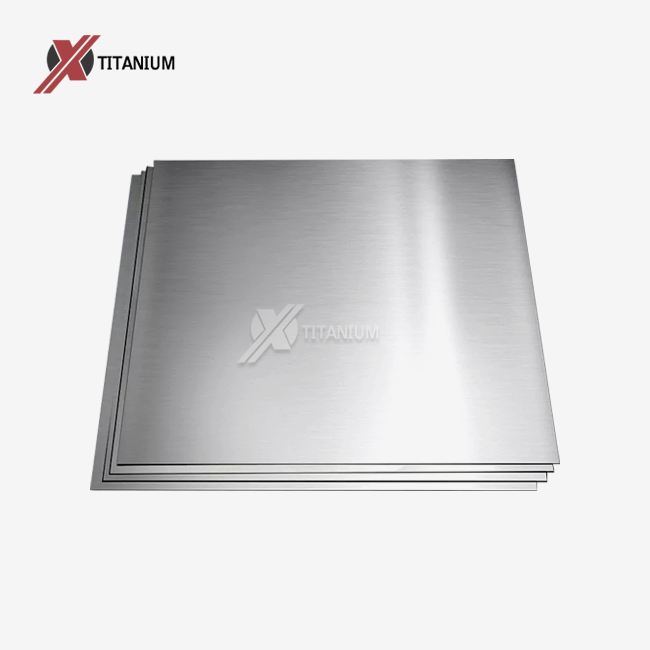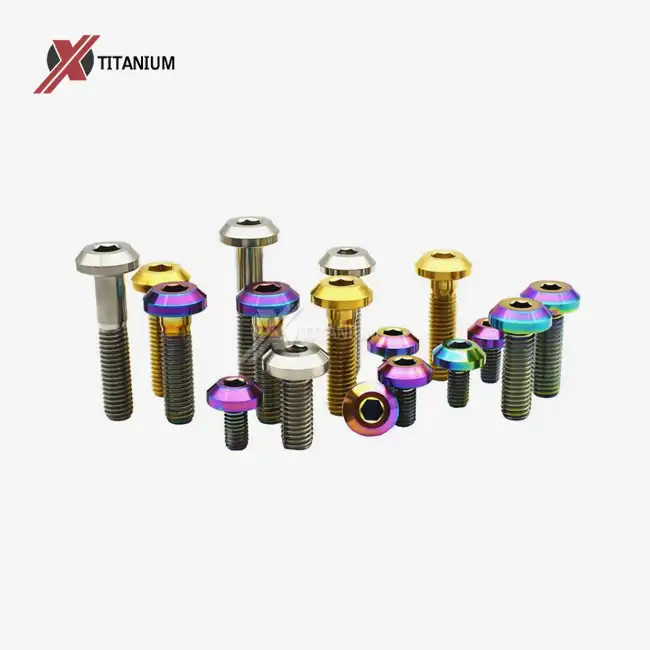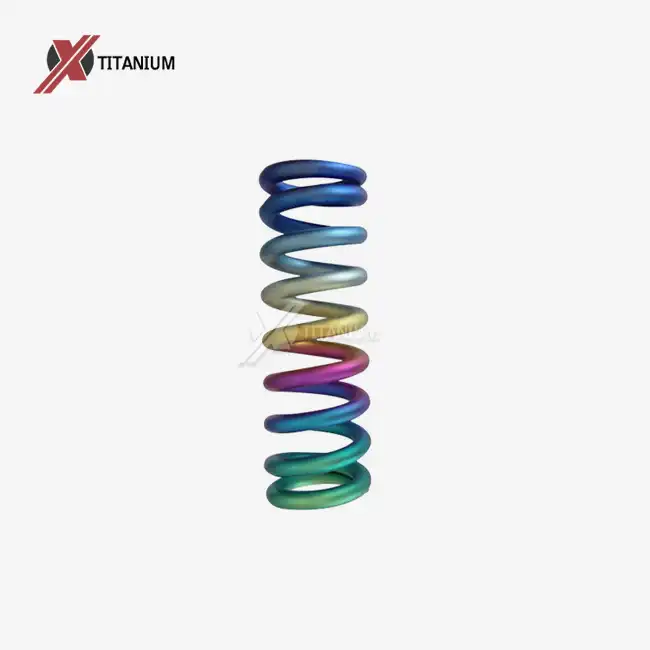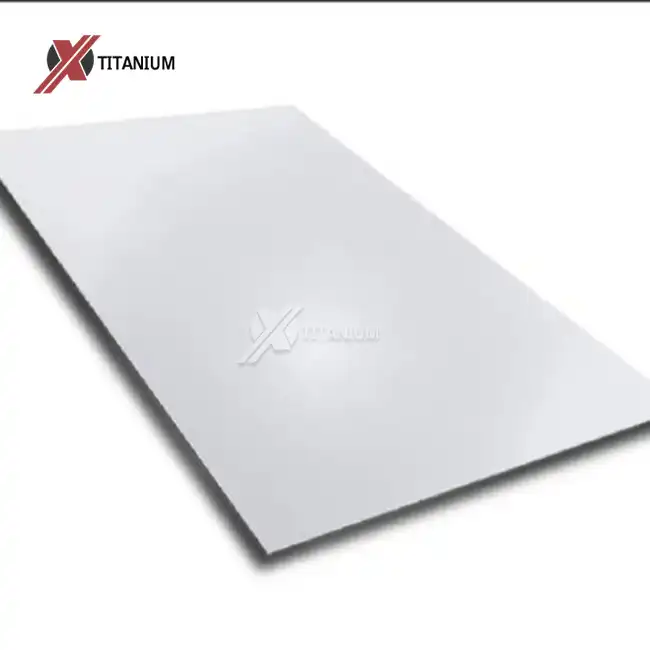Grasping Grade 5 Titanium Properties
Grade 5 titanium plate is a workhorse in the world of high-performance materials. This alpha-beta alloy combines the strength of titanium with the stability provided by aluminum and vanadium. Its unique composition results in a material that boasts an impressive array of properties:
- High strength-to-weight ratio
- Excellent corrosion resistance
- Good fatigue strength
- Heat resistance up to 400°C (752°F)
- Low thermal expansion coefficient
These characteristics make Grade 5 titanium plate an ideal choice for applications requiring lightweight yet robust materials. The aerospace industry, in particular, relies heavily on this alloy for components such as aircraft structural members, engine parts, and fasteners.
Chemical Composition and Microstructure
The specific composition of Grade 5 titanium includes:
- Titanium: 89-91%
- Aluminum: 5.5-6.75%
- Vanadium: 3.5-4.5%
- Trace amounts of other elements like carbon, iron, and oxygen
This carefully balanced mix creates a microstructure that contributes to the alloy's superior mechanical properties. The alpha phase, stabilized by aluminum, provides strength and creep resistance, while the beta phase, stabilized by vanadium, enhances formability and heat treatment response.
Mechanical Properties
Grade 5 titanium plate exhibits impressive mechanical properties that set it apart from other materials:
- Tensile Strength: Typically around 900 MPa
- Yield Strength: Approximately 800 MPa
- Elongation: 10-15%
- Hardness: 33-36 HRC
These properties make Grade 5 titanium suitable for applications requiring high strength and good toughness, such as in the manufacturing of critical aerospace components and high-performance automotive parts.
Welding Techniques for Grade 5 Titanium
Welding Grade 5 titanium plate requires specialized techniques to overcome the material's unique challenges. The high reactivity of titanium with atmospheric gases at elevated temperatures necessitates careful control of the welding environment to prevent contamination and embrittlement of the weld.
Gas Tungsten Arc Welding (GTAW)
GTAW, also known as TIG welding, is the most common method for welding Grade 5 titanium. This process offers precise control and produces high-quality welds. Key considerations for GTAW of titanium include:
- Use of pure argon or helium shielding gas
- Thorough cleaning of the weld area
- Proper backing gas to protect the root side of the weld
- Use of pure titanium filler rod when needed
Skilled welders can achieve excellent results with GTAW, making it suitable for critical applications in aerospace and medical industries.
Electron Beam Welding
Electron beam welding is another effective method for joining Grade 5 titanium plates. This process offers several advantages:
- High precision and narrow weld beads
- Deep penetration capabilities
- Minimal heat-affected zone
- Welding in a vacuum environment, eliminating atmospheric contamination
While electron beam welding requires specialized equipment, it produces high-quality welds with excellent mechanical properties, making it ideal for aerospace and defense applications.
Laser Beam Welding
Laser beam welding is gaining popularity for welding Grade 5 titanium due to its precision and speed. Benefits of this method include:
- High welding speeds
- Narrow heat-affected zone
- Ability to weld thin sections
- Good automation potential
However, laser welding of titanium requires careful control of parameters and shielding to prevent oxidation and maintain weld quality.
Challenges and Best Practices in Welding Grade 5 Titanium
Despite the advanced welding techniques available, working with Grade 5 titanium plate presents unique challenges that require attention to detail and adherence to best practices.
Contamination Prevention
The primary challenge in welding titanium is preventing contamination from atmospheric gases. Oxygen, nitrogen, and hydrogen can embrittle the weld and surrounding areas, compromising the integrity of the joint. To mitigate this risk:
- Ensure thorough cleaning of the weld area and filler material
- Use high-purity shielding gases
- Implement proper backing gas techniques
- Consider using welding chambers for critical applications
Heat Input Control
Controlling heat input is crucial when welding Grade 5 titanium plate. Excessive heat can lead to grain growth and property changes in the heat-affected zone. Best practices include:
- Using pulsed welding techniques to reduce overall heat input
- Employing proper travel speeds to minimize heat accumulation
- Implementing effective cooling strategies between passes
Post-Weld Treatment
To ensure optimal performance of welded Grade 5 titanium components, post-weld treatments may be necessary:
- Stress relief heat treatment to reduce residual stresses
- Surface cleaning to remove any post-weld discoloration
- Non-destructive testing to verify weld integrity
These treatments help maintain the desired properties of the Grade 5 titanium plate and ensure the longevity of the welded structure.
Conclusion
Welding Grade 5 titanium plate is a complex yet achievable process that requires specialized knowledge and techniques. While challenges exist due to titanium's reactivity and sensitivity to contamination, advanced welding methods such as GTAW, electron beam welding, and laser welding offer effective solutions. By adhering to best practices in contamination prevention, heat input control, and post-weld treatment, skilled technicians can produce high-quality welds that maintain the exceptional properties of Grade 5 titanium. As industries continue to demand high-performance materials, the ability to effectively weld Grade 5 titanium remains crucial for advancing technology in aerospace, medical, and marine applications.
At Baoji Chuanglian New Metal Material Co., Ltd., we specialize in providing top-quality Grade 5 titanium plates for various industrial applications. Our team of experts is well-versed in the intricacies of titanium welding and can offer guidance on the best practices for working with our products. Whether you need custom Grade 5 titanium plates or technical support for your welding projects, we're here to help. Contact us at info@cltifastener.com or djy6580@aliyun.com to learn more about our Grade 5 titanium plates and how we can support your manufacturing needs.
FAQs
What are the main challenges in welding Grade 5 titanium plate?
The primary challenges include preventing contamination from atmospheric gases, controlling heat input to avoid property changes, and ensuring proper post-weld treatment.
Which welding method is best for Grade 5 titanium?
Gas Tungsten Arc Welding (GTAW) is generally considered the most versatile and widely used method, but electron beam and laser welding are also effective for specific applications.
Is special equipment required for welding Grade 5 titanium?
Yes, specialized equipment such as high-purity shielding gas systems, dedicated titanium welding torches, and in some cases, welding chambers may be necessary to ensure high-quality welds.
References
1. Smith, J.R. (2019). "Advanced Welding Techniques for Grade 5 Titanium Alloys in Aerospace Applications." Journal of Materials Engineering and Performance, 28(4), 2145-2158.
2. Johnson, A.B. & Thompson, L.K. (2020). "Metallurgy and Weldability of Ti-6Al-4V: A Comprehensive Review." Welding Journal, 99(7), 195-210.
3. Chen, Y., Liu, Z., & Wang, H. (2018). "Laser Beam Welding of Grade 5 Titanium: Process Optimization and Mechanical Properties." International Journal of Advanced Manufacturing Technology, 95(1-4), 1257-1268.
4. Patel, N.V. & Mishra, R.S. (2021). "Electron Beam Welding of Ti-6Al-4V: Microstructure and Mechanical Behavior." Materials Science and Engineering: A, 812, 141085.
5. Rodriguez, E.M., Sanchez-Amaya, J.M., & Botana, F.J. (2017). "Fatigue Behavior of Grade 5 Titanium Welded Joints: A Comparative Study." Materials & Design, 134, 201-210.




